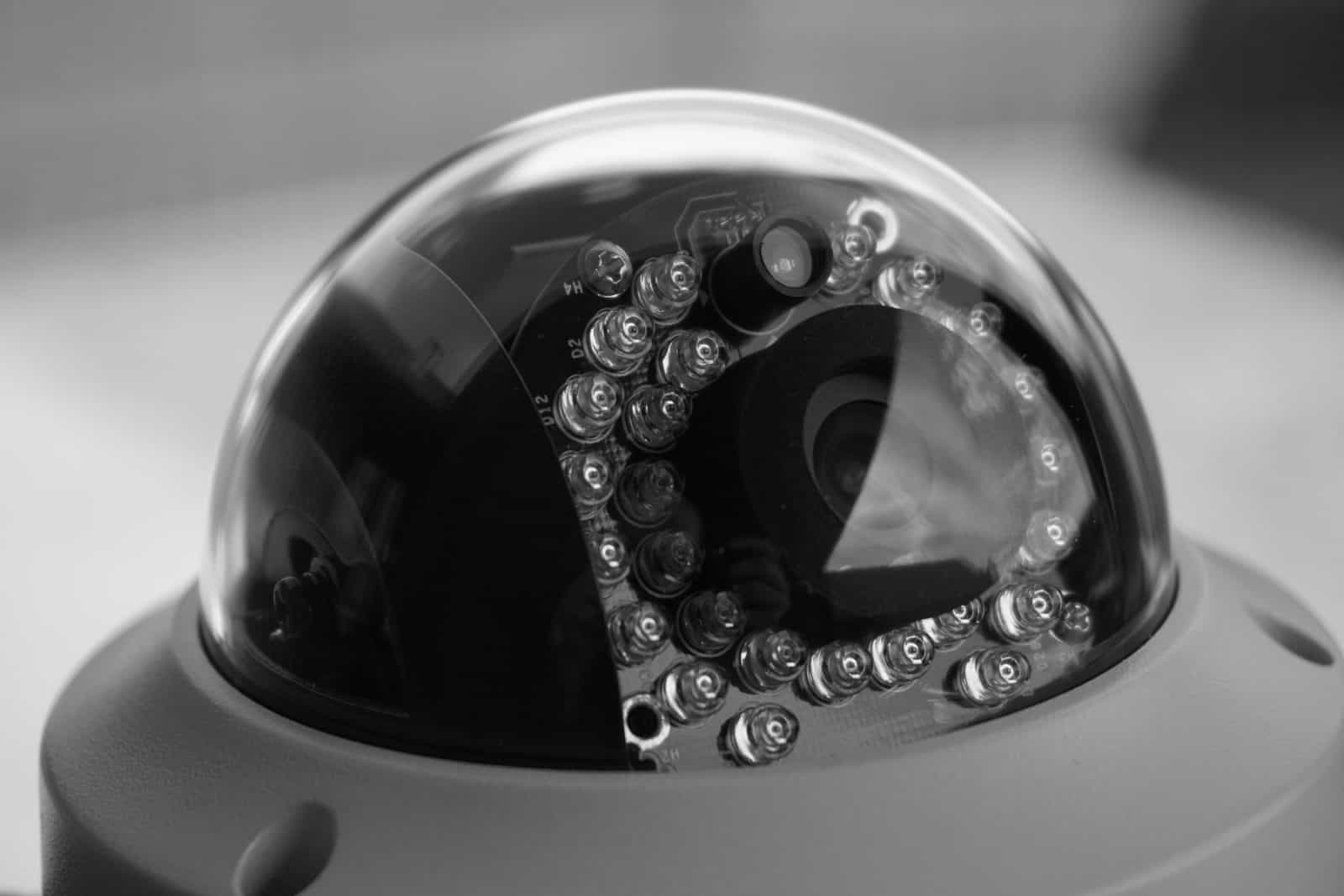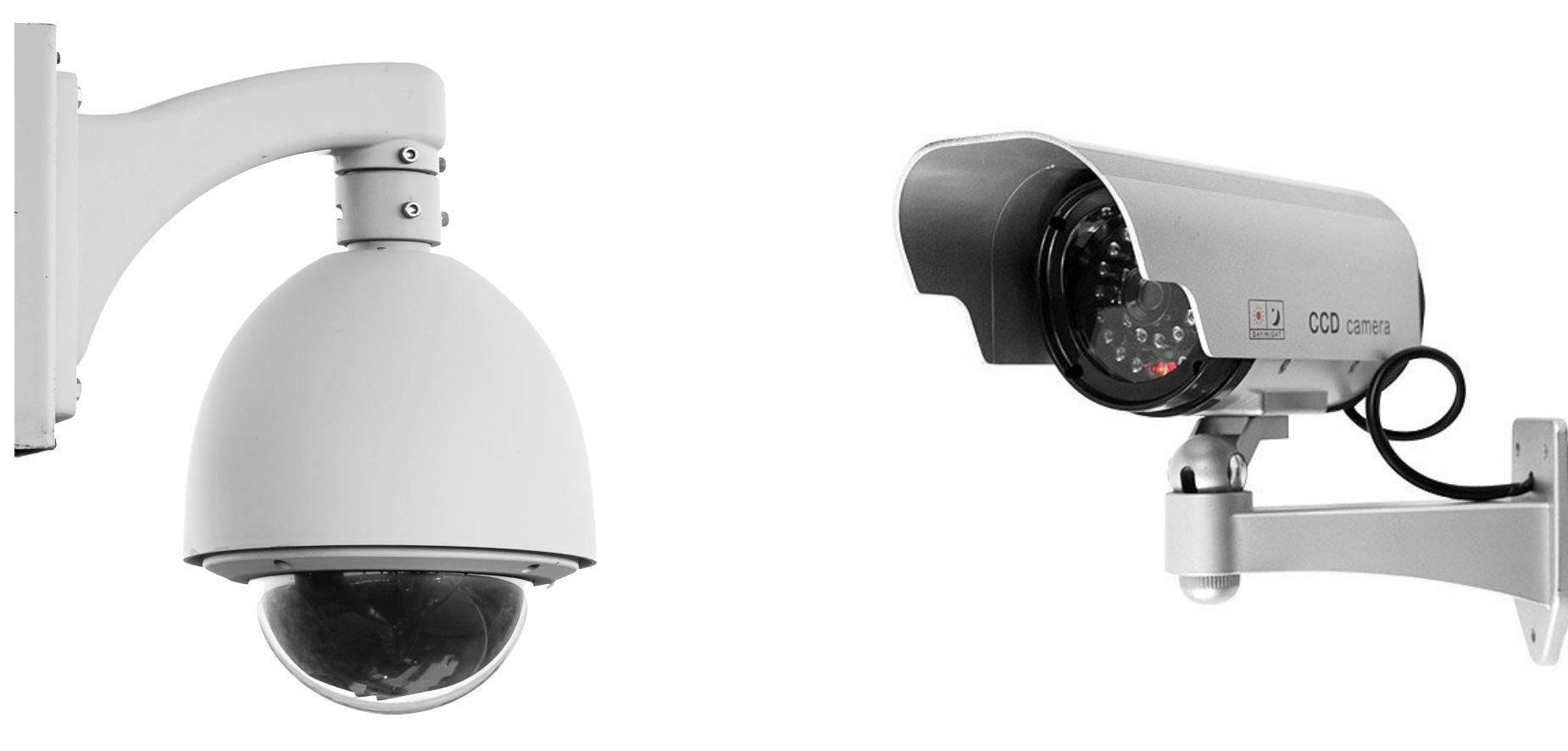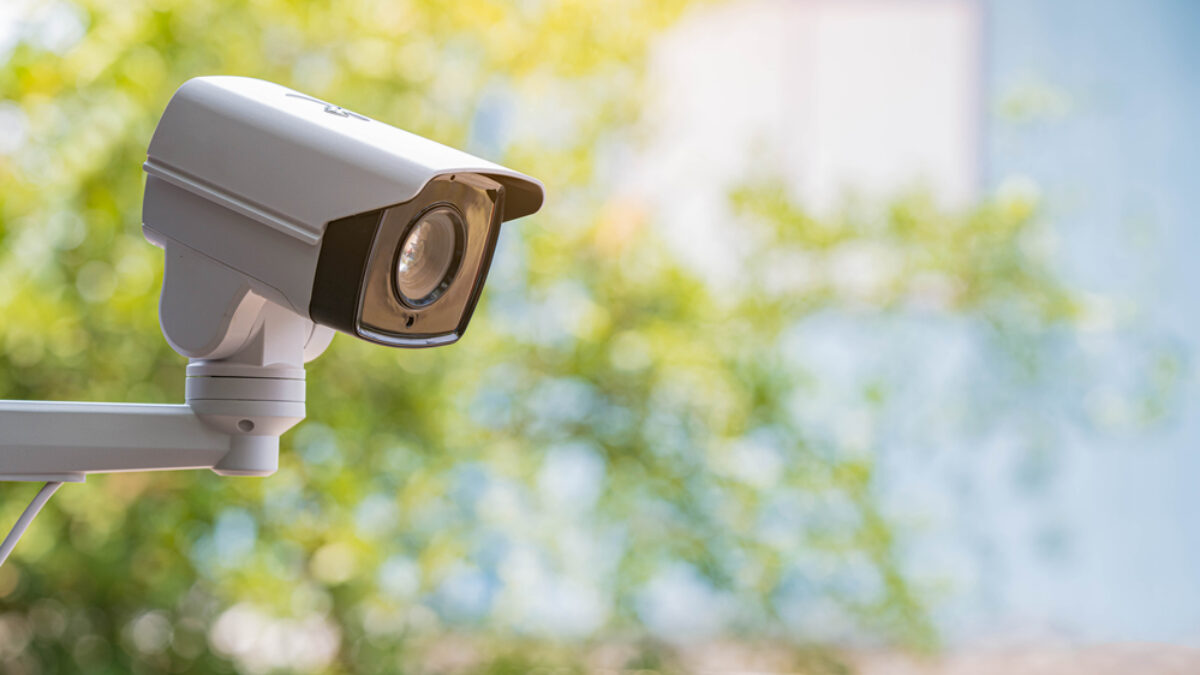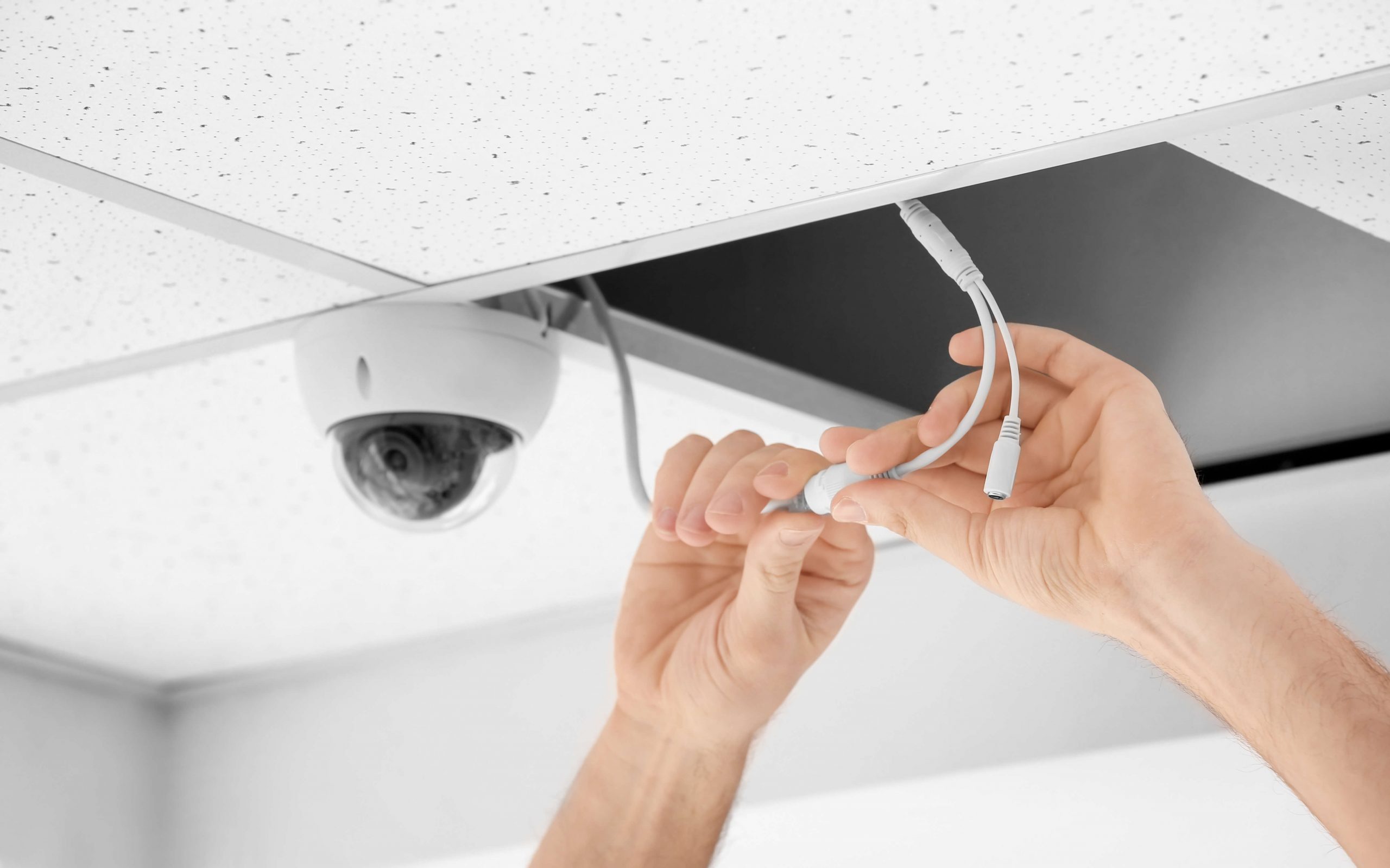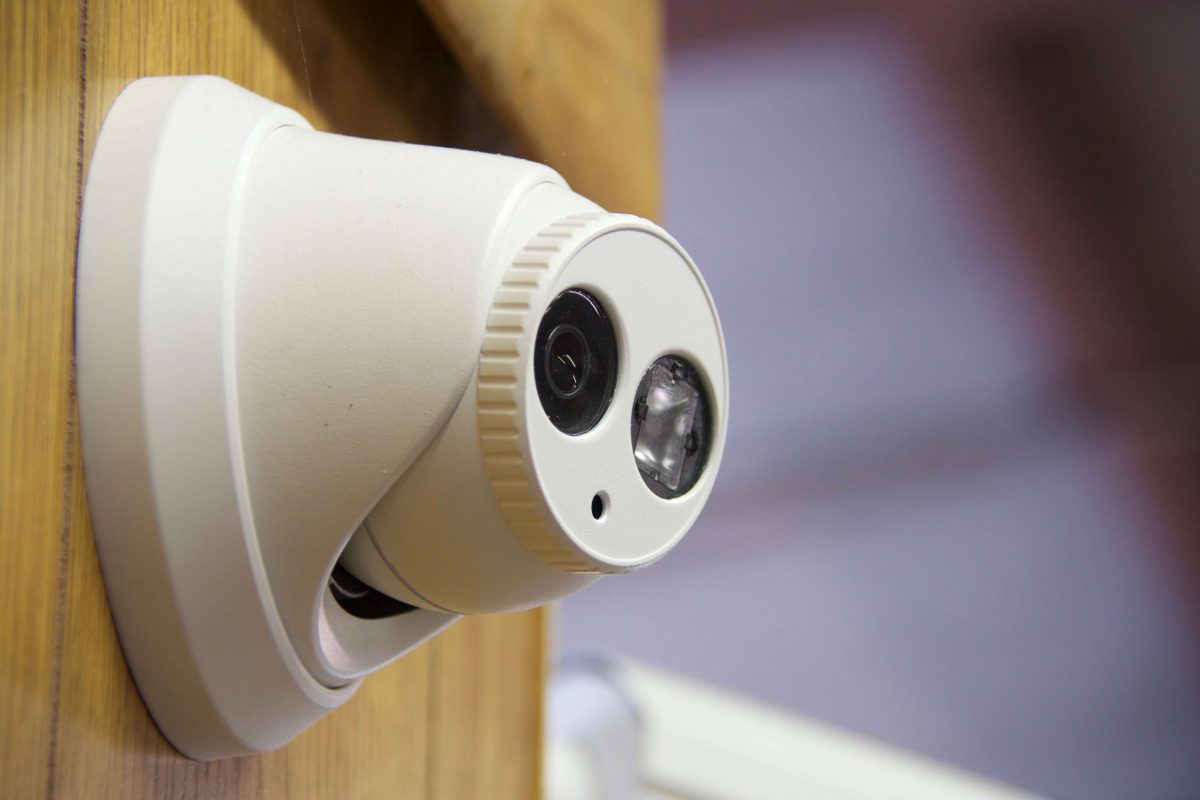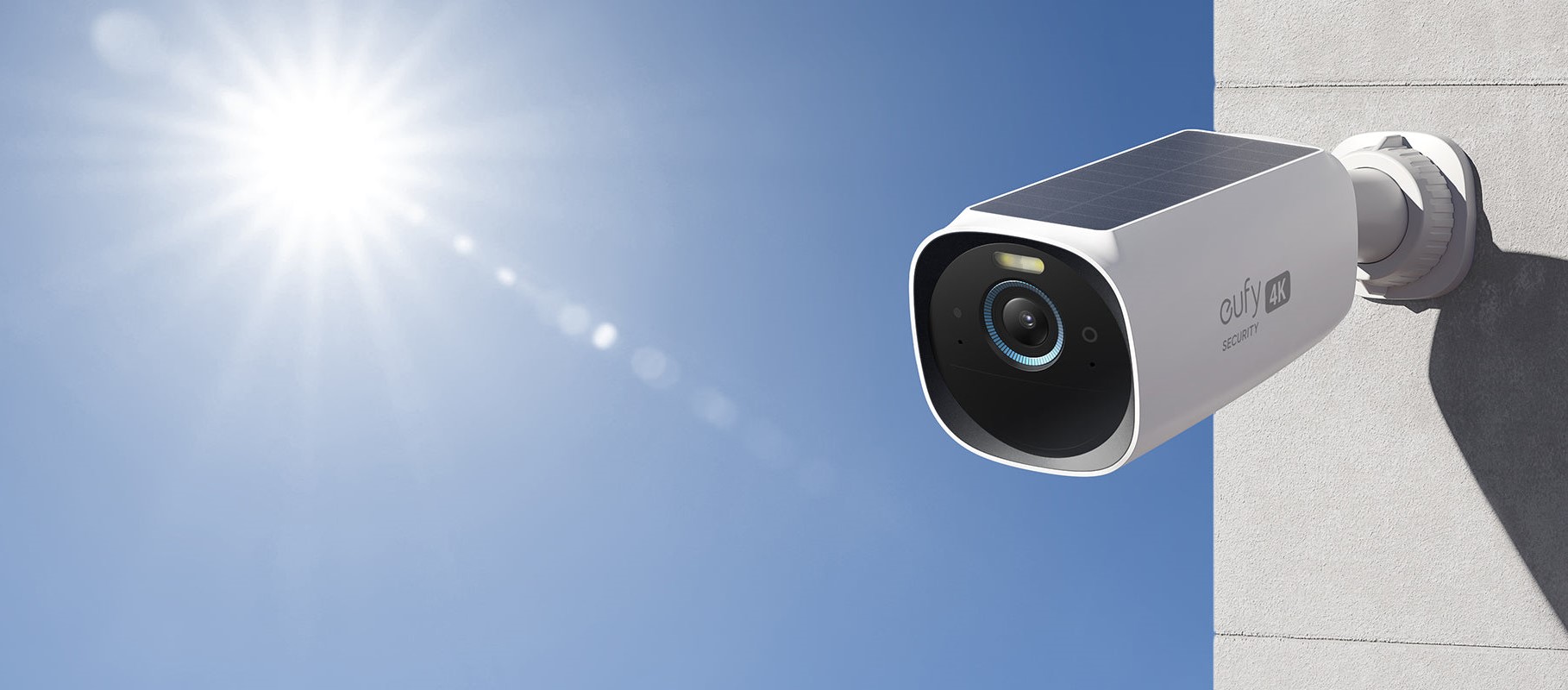Home>Home Security and Surveillance>How To Jam Security Cameras
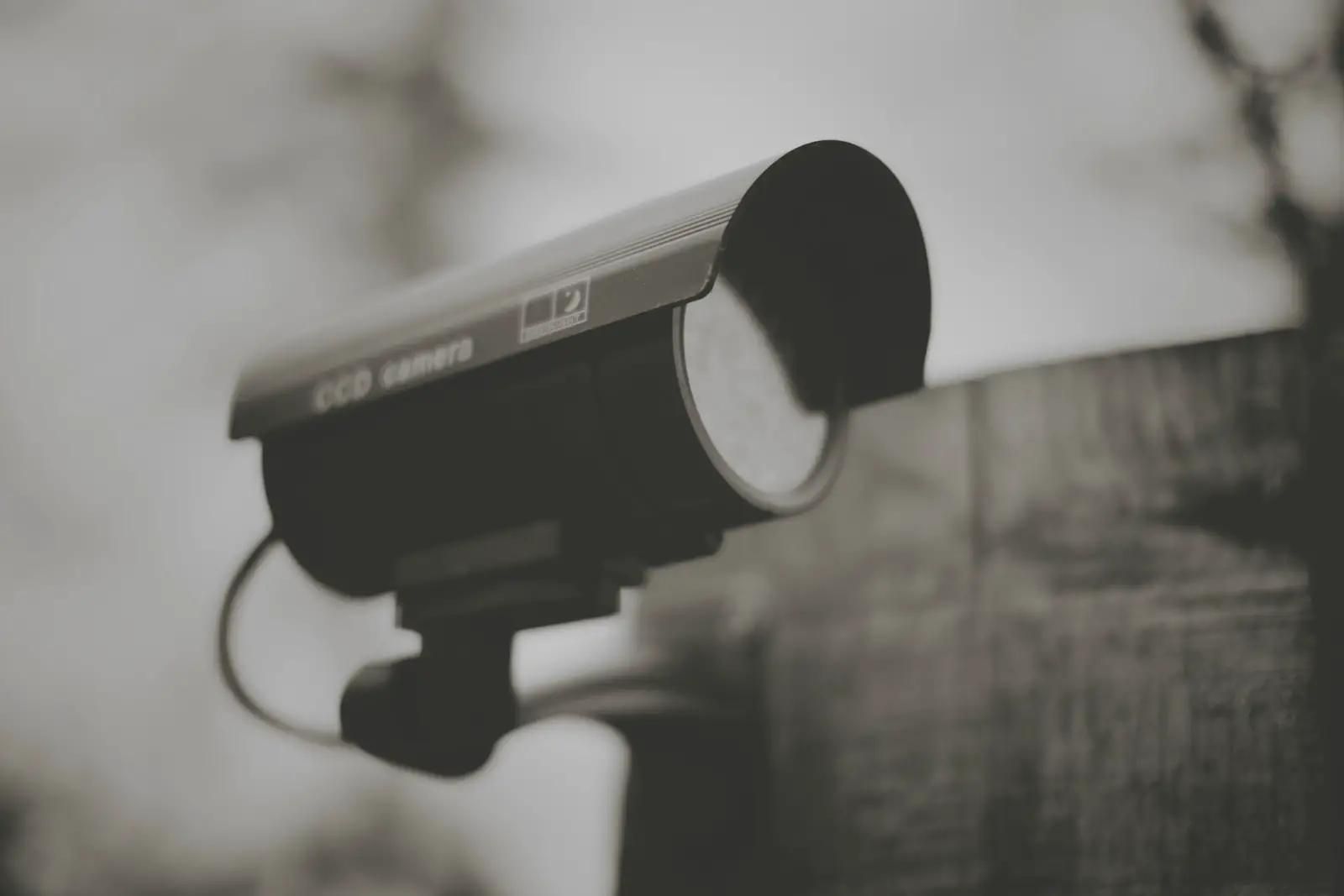

Home Security and Surveillance
How To Jam Security Cameras
Modified: March 6, 2024
Learn how to jam security cameras at home with our comprehensive guide on home security and surveillance. Protect your privacy and gain control over your personal space.
(Many of the links in this article redirect to a specific reviewed product. Your purchase of these products through affiliate links helps to generate commission for Storables.com, at no extra cost. Learn more)
Introduction
Home security is a top priority for homeowners around the world. With the advancement of technology, surveillance cameras have become a popular tool for protecting homes and deterring potential intruders. However, there may be situations where homeowners have legitimate reasons to consider disabling or jamming security cameras. In this article, we will explore the ins and outs of security cameras, the different types of systems available, common ways to jam them, how to choose the right jamming device, the steps involved in jamming security cameras, and the potential legal consequences associated with such actions.
Understanding the functioning and purpose of security cameras is crucial before delving into ways to jam them. Security cameras are devices that capture, record, and transmit video footage to a designated location. They are designed to monitor and document activities in and around a property, providing homeowners with visual evidence in case of any suspicious incidents or criminal activities. By installing surveillance cameras, homeowners can increase their sense of security, prevent thefts, and have peace of mind knowing that their property is being monitored.
There are various types of security camera systems available in the market, ranging from traditional analog cameras to advanced IP (Internet Protocol) cameras. Analog cameras are the older type and are connected to a DVR (Digital Video Recorder) using coaxial cables. On the other hand, IP cameras use digital technology to transmit video footage over a network, allowing homeowners to view the footage remotely on their smartphones or computers. IP cameras are more flexible, offer higher resolution, and can be easily integrated with home automation systems.
While security cameras are an effective way to enhance home security, there might be situations where homeowners have concerns about their privacy being invaded, or they need to disable the cameras temporarily due to specific circumstances. In such cases, understanding the common methods to jam security cameras can be useful. Some of the common ways to disrupt the functioning of security cameras include physical obstruction, using infrared light sources, employing cameras with infrared filters, and using RF (Radio Frequency) jammers.
Before proceeding with jamming security cameras, it is essential to choose the right jamming device that suits your specific requirements. Factors such as the range of the jamming device, compatibility with the camera system, and the legality of using such devices in your jurisdiction should be considered. It is also crucial to evaluate the potential legal consequences of interfering with security cameras, as laws vary in different regions.
In the following sections, we will discuss in detail the different types of security cameras, the common methods to jam them, the process of choosing the right jamming device, the steps involved in disrupting security cameras, and the potential legal ramifications associated with such actions. It is important to note that this article is for informational purposes only, and we do not condone or encourage any illegal activities. Now, let’s dive into the world of security cameras and explore how they can be jammed.
Key Takeaways:
- Disrupting security cameras without authorization is illegal and can lead to severe penalties, including fines and imprisonment. Always prioritize personal safety and comply with the laws governing security camera systems.
- Understanding the potential legal consequences of jamming security cameras is crucial. Violating privacy laws and wireless interference laws can result in civil lawsuits, criminal charges, and professional repercussions. Always seek legal guidance and explore lawful alternatives for addressing security concerns.
Read more: How To Jam A Security Camera
Understanding Security Cameras
Security cameras are electronic devices that capture and record video footage in order to monitor activities in and around a property. They play a crucial role in enhancing home security by deterring potential intruders and providing homeowners with visual evidence of any suspicious incidents or criminal activities.
These cameras are typically placed in strategic locations around a property, such as entry points, driveways, and outdoor areas, to ensure comprehensive surveillance coverage. They can be installed both indoors and outdoors, depending on the specific security needs of the homeowner.
The primary components of a security camera system include the camera itself, cables for power and data transmission, a recording device, and a monitor for live viewing. The camera captures video footage either in color or black and white, depending on its specifications. The cables connect the camera to the recording device, which can be a DVR (Digital Video Recorder) for analog cameras or an NVR (Network Video Recorder) for IP cameras. The monitor allows homeowners to view the live feed from the cameras or play back recorded footage.
Security cameras can be categorized into two main types: analog cameras and IP (Internet Protocol) cameras.
Analog cameras are the traditional type of security cameras and have been used for many years. They rely on analog technology, where video signals are transmitted via coaxial cables to the DVR for recording. Analog cameras are typically less expensive compared to IP cameras and are suitable for basic surveillance needs. However, they generally offer lower resolution and do not provide advanced features such as remote accessibility and integration with home automation systems.
On the other hand, IP cameras are the newer and more advanced type of security cameras. They use digital technology to capture and transmit video footage over a network. IP cameras offer several advantages over analog cameras, including higher resolution, better image quality, and the ability to integrate with other devices and systems, such as alarms and access control systems. They also provide remote accessibility, allowing homeowners to view the live feed or recorded footage from anywhere using their smartphones or computers.
IP cameras can be further classified based on their form factor and usage. Some common types include bullet cameras, dome cameras, PTZ (Pan-Tilt-Zoom) cameras, and specialty cameras like thermal cameras and license plate recognition cameras. Each type has its own set of features and is suitable for specific surveillance requirements.
Overall, security cameras are an essential component of a comprehensive home security system. They provide homeowners with peace of mind and act as a deterrent to potential intruders. Understanding the different types of security cameras and their functionalities is crucial for selecting the right camera system that meets your specific security needs.
Types of Security Camera Systems
When it comes to choosing a security camera system for your home, there are various options available in the market. Each type of system comes with its own features, benefits, and considerations. Understanding the different types of security camera systems can help you make an informed decision based on your specific security requirements. Let’s explore some common types of security camera systems:
-
Analog Camera Systems:
Analog camera systems are the traditional type of security camera systems. They consist of analog cameras that capture video footage and transmit it to a Digital Video Recorder (DVR) using coaxial cables. The DVR records and stores the footage for later playback. Analog camera systems are known for their affordability and ease of installation. However, they typically offer lower resolution and limited features compared to newer technologies.
-
IP Camera Systems:
IP camera systems, also known as network camera systems, are the modern and more advanced type of security camera systems. IP cameras capture and transmit video footage over an IP network, allowing homeowners to view the footage remotely on their smartphones or computers. These systems offer higher resolution, better image quality, and advanced features such as motion detection, night vision, and two-way audio. IP camera systems are ideal for those seeking high-quality video surveillance with remote accessibility.
-
Read more: How To Choose Security Cameras
Wireless Camera Systems:
Wireless camera systems are a convenient option for those who want a cable-free installation. These systems use wireless technology to transmit video footage from the cameras to the recording device or a network. They eliminate the need for running cables, making installation simpler and less intrusive. Wireless camera systems are suitable for both indoor and outdoor use, providing flexibility in camera placement.
-
HD-SDI Camera Systems:
HD-SDI (High Definition Serial Digital Interface) camera systems offer high-definition video quality with uncompressed video transmission. These systems are capable of capturing and transmitting video in 1080p resolution, providing crystal-clear images. However, HD-SDI camera systems require special coaxial cables capable of handling high bandwidth, and they may have limitations in terms of cable length.
-
PTZ Camera Systems:
PTZ (Pan-Tilt-Zoom) camera systems consist of cameras with motorized control for panning, tilting, and zooming. These cameras can be remotely controlled to cover a wide area and focus on specific targets. PTZ camera systems are suitable for large properties or areas that require flexible and precise surveillance coverage. They can be programmed to automatically patrol specific areas or respond to motion detection.
It’s important to consider factors such as your security needs, budget, installation requirements, and desired features when selecting a security camera system for your home. Consulting with a professional security provider can also help you determine the best system that meets your specific requirements and ensures optimal home security.
Common Ways to Jam Security Cameras
While security cameras are essential for home security, there may be situations where homeowners have legitimate reasons to consider disabling or jamming these cameras temporarily. It’s important to note that interfering with security cameras without proper authorization is illegal in most jurisdictions. However, it’s still valuable to understand the common methods used to disrupt security cameras. Here are some common ways to jam security cameras:
-
Read more: How To Waterproof A Security Camera
Physical Obstruction:
One of the simplest and non-intrusive ways to disable a security camera is by physically obstructing its field of view. This can be done by placing an opaque object or covering the camera lens with a material like tape or a cloth. However, it’s essential to note that this method may not be effective against cameras with wide-angle or panoramic views.
-
Using Infrared Light Sources:
Some security cameras rely on infrared (IR) technology to capture clear images in low-light conditions. By using a powerful infrared light source, such as an IR illuminator or flashlight, it’s possible to flood the camera’s sensor with IR light, causing overexposure and rendering the footage unusable.
-
Employing Cameras with Infrared Filters:
Another way to disrupt security cameras that use infrared technology is by using a camera with an infrared filter. These filters block the transmission of infrared light, making it difficult for the camera to capture clear images in low-light conditions.
-
Using RF (Radio Frequency) Jammers:
RF jammers are devices that emit strong radio signals in the same frequency range as the wireless transmission used by security cameras. By overpowering or interfering with the camera’s wireless communication, RF jammers can disrupt the camera’s ability to transmit video footage to the recording device or monitoring station.
-
Read more: How To Hide A Security Camera
Hacking the Camera System:
In certain cases, it may be possible to gain unauthorized access to the camera system’s software or control panel, allowing the user to disable or manipulate the cameras remotely. However, hacking security camera systems is highly illegal and can lead to severe legal consequences.
It’s important to remember that interfering with security cameras without proper authorization is illegal in many jurisdictions. Jamming security cameras not only poses a risk to the security of your property but can also result in criminal charges and penalties. Therefore, it’s highly recommended to consult with professionals and law enforcement authorities if you have concerns about security cameras or need assistance in addressing specific security issues.
Please note that this article provides information for educational purposes only. It does not endorse or condone any illegal activities related to security cameras. Always comply with the laws and regulations of your jurisdiction when dealing with security camera systems.
How to Choose the Right Jamming Device
If you find yourself in a situation where you need to temporarily disable security cameras, it’s important to select the right jamming device that meets your specific requirements. Choosing the appropriate jamming device involves considering factors such as the range of the device, compatibility with the camera system, and the legality of its use in your jurisdiction. Here are some key considerations to help you choose the right jamming device:
-
Determine the Range:
The range of the jamming device is crucial in ensuring its effectiveness. Consider the distance between the jamming device and the security cameras you want to disrupt. Some jamming devices have a limited range, while others can cover larger areas. It’s important to choose a jammer that has a range sufficient to reach the cameras you want to jam without going beyond your property boundaries.
-
Compatibility with Camera Systems:
Not all jamming devices are compatible with every type of security camera system. Consider the type of camera system you want to jam, whether it’s an analog system or an IP system, and ensure that the jamming device is designed to disrupt the specific frequency range used by the cameras. Research the specifications of the jammer and ensure it matches the frequency used by your camera system.
-
Read more: How To Hack Into Security Cameras
Legal Considerations:
Before purchasing and using a jamming device, it’s crucial to understand the legality of its use in your jurisdiction. Laws regarding the use of jamming devices vary by country and region. In many places, jamming devices are illegal and using them can result in severe penalties. Make sure to consult with local authorities, security professionals, or legal experts to understand the regulations surrounding the use of jamming devices in your area.
-
Research and Reviews:
When considering different jamming devices, it’s important to conduct thorough research and read reviews from reputable sources. Look for feedback from other users who have used the device for similar purposes. Consider the device’s reliability, effectiveness, and ease of use. Reading reviews can provide valuable insights and help you make an informed decision.
-
Consult with Professionals:
If you are unsure about which jamming device to choose or how to use it safely and legally, it’s always advisable to consult with professionals in the field. Reach out to security experts, installers, or law enforcement authorities for guidance and advice on selecting the right jamming device for your specific needs.
It’s important to stress that this article provides information for educational purposes only and does not endorse or encourage any illegal activities. Disrupting or disabling security cameras without proper authorization is against the law in many jurisdictions. Always prioritize your personal safety and comply with the legal regulations governing your area when dealing with security camera systems.
Steps to Jam Security Cameras
Disclaimer: This article is for informational purposes only. Jamming or interfering with security cameras without proper authorization is illegal in many jurisdictions. The steps outlined below are provided for educational purposes and do not endorse or encourage any illegal activities.
If you find yourself in a situation where you need to temporarily disable security cameras, it’s important to proceed with caution and consider the legal and ethical implications. However, for educational purposes, here are the general steps involved in jamming security cameras:
-
Read more: How To Connect A Security Camera
Research and Familiarize Yourself:
Before attempting to jam security cameras, conduct thorough research to understand the legal restrictions and the potential consequences involved. It’s important to familiarize yourself with the laws and regulations governing the use of jamming devices in your jurisdiction.
-
Choose the Right Jamming Device:
If you decide to proceed, select a jamming device that suits your specific requirements. Consider factors such as the range of the device, compatibility with the camera system, and the legality of its use in your region. Refer to the previous section on “How to Choose the Right Jamming Device” for detailed guidance.
-
Locate the Security Cameras:
Familiarize yourself with the location and field of view of the security cameras you wish to jam. This will help you understand the range and directionality needed for your jamming device to effectively disrupt their operation.
-
Position the Jamming Device Strategically:
Place the jamming device within the effective range of the security cameras. Ensure that any obstruction or interference is minimized to maximize the impact of the jamming signal.
-
Read more: How To Make A Security Camera
Activate the Jamming Device:
Turn on the jamming device and allow it to emit the jamming signal. The signal should interfere with the wireless communication or video transmission of the security cameras, causing disruption or temporary disabling of their operation.
-
Monitor the Impact:
Observe the behavior of the security cameras to determine if the jamming device is effectively disrupting their operation. Keep in mind that the impact may vary depending on various factors such as the range, power, and quality of the jamming device.
-
Exercise Caution and Respect Legal Boundaries:
Always prioritize personal safety and be mindful of the legal and ethical implications of jamming security cameras. Remember that unauthorized interference with security cameras is illegal in many jurisdictions and can result in severe penalties.
It’s important to reiterate that interfering with security cameras without proper authorization is against the law and can have serious consequences. Always seek legal counsel, consult with professionals, or contact relevant authorities if you have concerns about security cameras or require assistance with specific security issues.
Potential Legal Consequences
Interfering with security cameras without proper authorization can lead to significant legal consequences. While the specific penalties may vary depending on the jurisdiction, it’s important to understand the potential legal ramifications associated with jamming security cameras. Here are some key points to consider:
-
Read more: How To Detect A Security Camera
Violation of Privacy Laws:
Jamming security cameras can infringe upon the privacy rights of others. In many jurisdictions, individuals have the right to privacy, and intentionally interfering with security cameras can be seen as a violation of those rights. Violations of privacy laws can result in civil lawsuits, fines, and other legal penalties.
-
Wireless Interference Laws:
Jamming devices, particularly those that disrupt wireless communications, often violate wireless interference laws. These laws are in place to maintain the integrity of wireless networks and prevent unauthorized interference. Engaging in illegal jamming activities can lead to substantial fines, imprisonment, or both.
-
Criminal Charges:
In many jurisdictions, deliberately jamming security cameras can be considered a criminal offense. Depending on the severity and impact of the interference, individuals involved may face criminal charges such as vandalism, property damage, trespassing, or even more serious charges related to obstruction of justice or interference with public safety.
-
Civil Liability:
Disrupting security cameras can expose individuals to civil liability for damages caused. If the interference results in harm to property, loss of evidence, or personal injuries, the affected parties may file civil lawsuits seeking compensation for their losses. This can include repairs, replacement of damaged equipment, or any other financial and emotional harm caused by the disruption.
-
Read more: How To Reset A Security Camera
Professional Consequences:
Professionals in the security industry, such as security consultants or technicians, may face severe professional consequences for engaging in illegal jamming activities. This can include loss of licenses, tarnished reputation, and potential legal action against their professional credentials.
It’s important to note that the information provided in this article is for educational purposes only and does not constitute legal advice. Laws and regulations surrounding the use of jamming devices and the interference with security cameras vary by jurisdiction. If you have concerns about security cameras or need assistance in addressing specific security issues, consult with legal professionals, security experts, or relevant authorities to ensure compliance with the law.
Remember, respecting the privacy rights of others and adhering to the legal boundaries promotes a safe and lawful environment for everyone.
Conclusion
Security cameras play a vital role in protecting homes and ensuring peace of mind for homeowners. While there may be legitimate reasons for wanting to temporarily jam or disable security cameras, it’s important to approach the issue with caution and respect the legal and ethical implications associated with such actions.
In this article, we explored the different types of security camera systems, ranging from traditional analog cameras to advanced IP cameras. We also discussed common methods used to disrupt security cameras, such as physical obstruction, using infrared light sources, employing cameras with infrared filters, and using RF (Radio Frequency) jammers.
Choosing the right jamming device is essential and involves considering factors such as the range of the device, compatibility with the camera system, and the legality of its use in your jurisdiction. It’s crucial to familiarize yourself with the laws and regulations governing the use of jamming devices and to consult with professionals or relevant authorities for guidance.
We also highlighted the potential legal consequences associated with interfering with security cameras without proper authorization. Violations of privacy laws, wireless interference laws, and the potential for criminal charges or civil liability can lead to severe penalties, including fines, imprisonment, or both.
It is important to emphasize that this article is for informational purposes only. We do not endorse or encourage any illegal activities related to security cameras. Always prioritize personal safety and comply with the legal regulations governing your jurisdiction when dealing with security camera systems.
In conclusion, while security cameras serve as a valuable tool for home security, it’s important to respect the privacy rights of others and adhere to the laws and regulations governing their use. Engage in open communication, consult with professionals, and explore legal alternatives to address any concerns or issues related to security cameras and your personal security needs.
Frequently Asked Questions about How To Jam Security Cameras
Was this page helpful?
At Storables.com, we guarantee accurate and reliable information. Our content, validated by Expert Board Contributors, is crafted following stringent Editorial Policies. We're committed to providing you with well-researched, expert-backed insights for all your informational needs.
